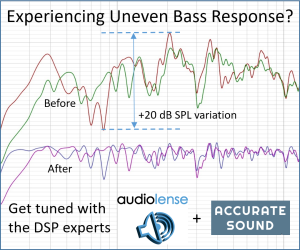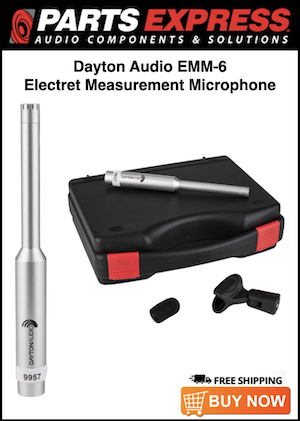whoareyou
Member
Thread Starter
- Joined
- Dec 23, 2021
- Posts
- 235
More
- Main Amp
- Benchmark AHB2
- Additional Amp
- ATI AT525NC
- DAC
- Exasound E38
- Computer Audio
- JRiver
- Front Speakers
- Psb synchrony one
- Center Channel Speaker
- PSB synchrony one C
- Surround Speakers
- Revel m105
I understand the different target curves, can hear the differences between but have a couple questions.
How does Audiolense determine 0 DB when faced with various room modes exaggerating bass response over treble?
So, for example I have several room modes / dips in bass that go up and down by as much as 10 - 15 db.. Around 50, 80, 110. I think this is fairly common.
As a result the higher frequency must all be raised to "keep up" with the bloated bass measurements, or I can lower the target to what I consider my 0 DB reference level?
Any best practice guidelines in this situation?
Thanks
How does Audiolense determine 0 DB when faced with various room modes exaggerating bass response over treble?
So, for example I have several room modes / dips in bass that go up and down by as much as 10 - 15 db.. Around 50, 80, 110. I think this is fairly common.
As a result the higher frequency must all be raised to "keep up" with the bloated bass measurements, or I can lower the target to what I consider my 0 DB reference level?
Any best practice guidelines in this situation?
Thanks













